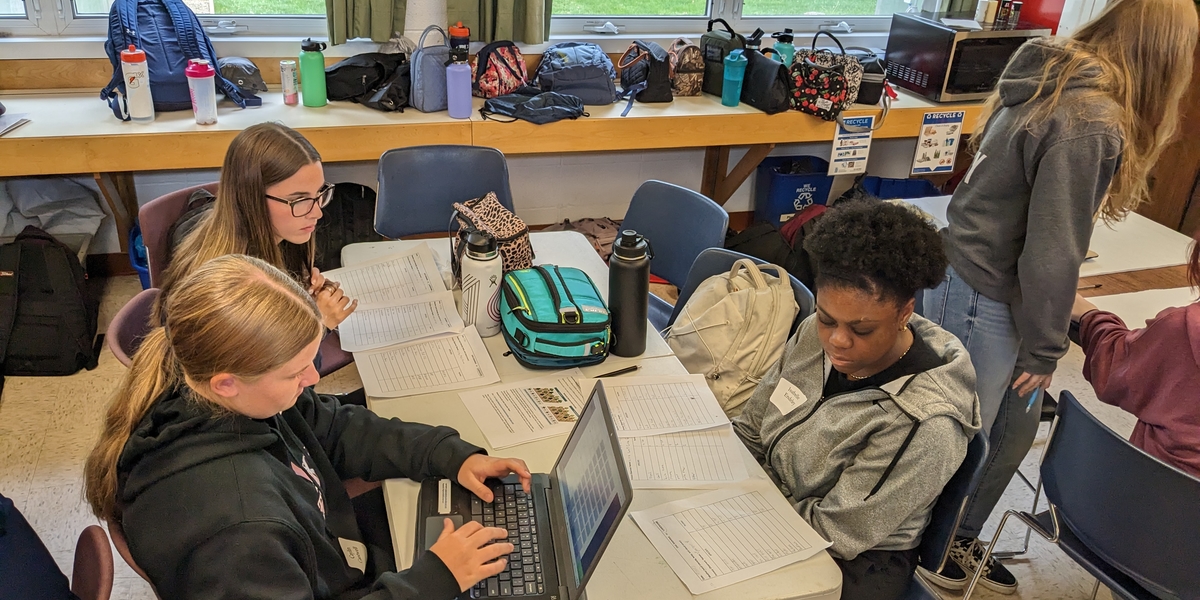
On an intermittently rainy spring day, a group of young scientists pull out their phones and binoculars. Using the phone app Merlin and their observational skills, they are conducting a bird point count to compare bird species found in the riparian habitat along Fish Lake within the oak savanna. Along the way, they keep a lookout for other signs of animals.
Nearby, decked out with waders, a second group of young scientists wade into Fish Lake to check minnow traps set the night before. Pulling on the string, they open the metal wire trap and knock all the creatures into a green, plastic five-gallon bucket. Out of the lake, they measure the length and mass of the aquatic creatures before returning them to their home. They collect the same data at another aquatic microhabitat within Fish Lake.
Around the main headquarters of Cedar Creek Ecosystem Science Reserve, a third group of young scientists throw white squares called quadrats into the prairie to collect data on plant biodiversity. Then, with gusto, these scientists sweep for insects and set pitfall traps to see what insects are found in these habitats. These measures are repeated in the lawn and a nearby deciduous forest.
A fourth group of young scientists, in blue plastic ponchos, are on a hike, working with a postdoctoral researcher to gather water samples along the Cedar Bog Lake Trail. As they dip glass vials into the water, they make observations about aquatic habitats along the way: a wetland along a road, a white cedar swamp, and a lake. When they return from their expedition, these scientists explore the algal community and biogeochemistry to see if there are any patterns.
The students are at Cedar Creek for EcoExtravaganza, a unique field trip, in its 10th year, that occurs with high school and middle school students from two local schools each spring. Simultaneously, each group of students visiting Cedar Creek have a brief glimpse of scientific field work, data collection, analysis, and communication.
Guided by a team of volunteer undergrads, graduate students and postdocs who took time out of their busy schedules to lead and support scientific inquiry and exploration, the high school students come back to lab and classroom spaces to analyze their field data. Each group exploring a different scientific question, each getting ready to share their findings. Some groups use their data to calculate the Simpson’s diversity index, others use microscopes to classify algal communities. All groups make sense of the data through graphical analysis as they get ready to present their findings to their peers.
“It’s been amazing to see the ambitious ecological questions that young scientists from our community can ask and answer on their field trips! The opportunity to work alongside graduate students, postdocs, staff and their peers to do authentic science is empowering and impactful for all involved,” says Caitlin Potter, associate director of Cedar Creek.
At the end of a busy day, the research groups come together and share their results in an informal symposium. A few findings: the biodiversity of birds was higher in the oak savanna than the riparian habitat; no minnows were caught at Fish Lake, but there were a ton of dragonflies and a swimming bull snake; there were more insects found via sweep netting in the prairie than the other habitats, especially ants; and there were high levels of lead in the wetland by the road compared to other water habitats.
As they share their findings, it is clear: the students engaged in authentic fieldwork and attempted to make sense of the world around them through wonder, exploration, and a lot of laughter. – Kara Baldwin
Kara Baldwin is the education and community engagement coordinator at Cedar Creek Ecosystem Science Reserve.